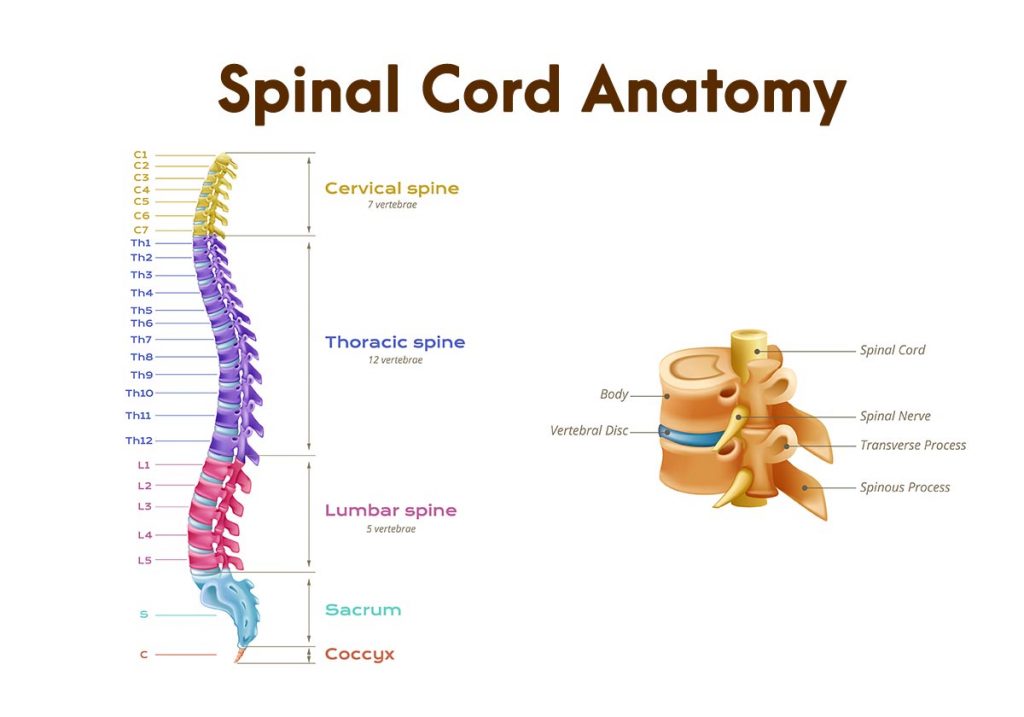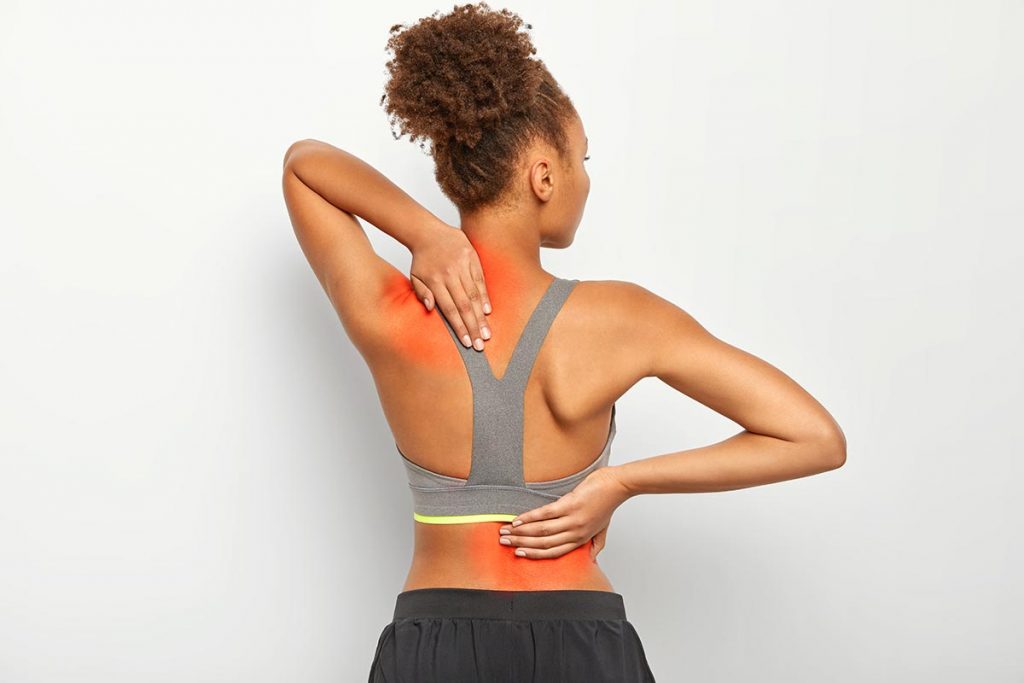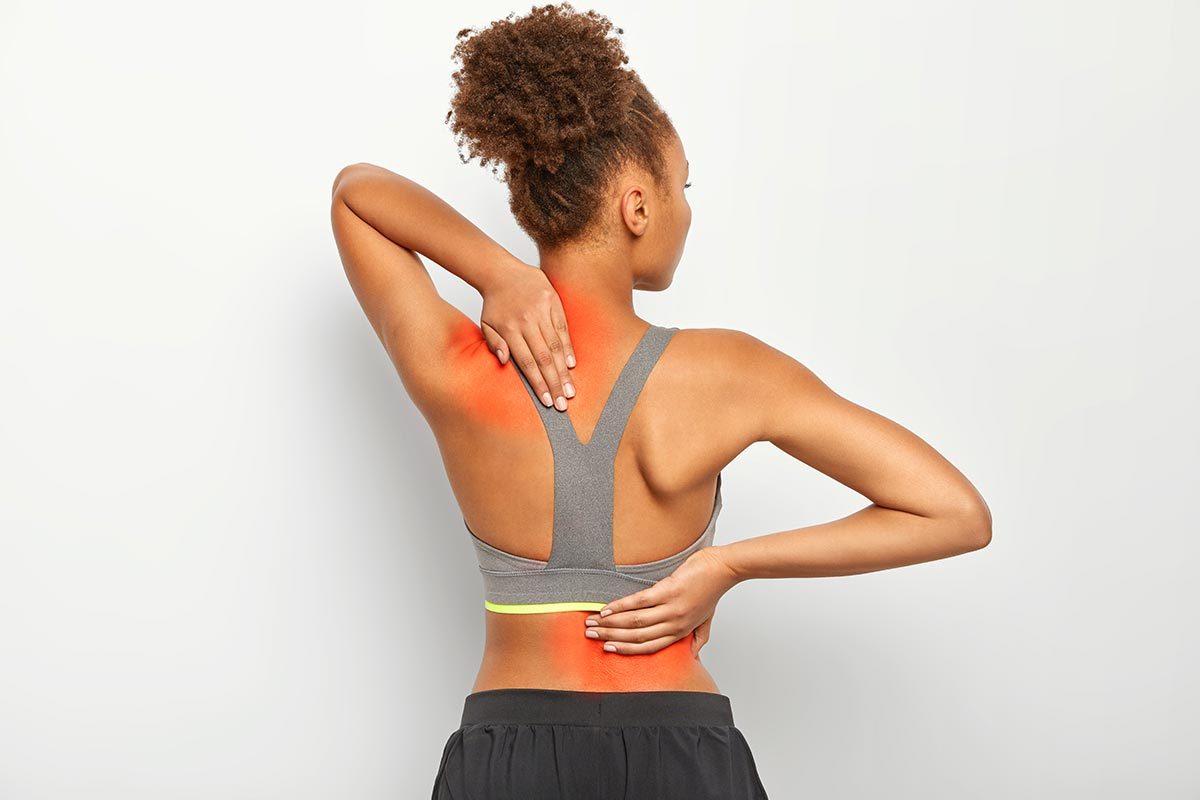Table of Contents
- Types of Myelopathy
- Range of Myelopathy Symptoms
- Treatment Options for Myelopathy
- Lifestyle Changes and Self-Care
- Take Control of Myelopathy
The spinal cord can compress due to injury, disease, infection and degenerative conditions involving the spinal disks, facet joints and vertebrae (bones). Myelopathy is the term used to describe spinal cord injury and symptoms due to degenerative issues. It is a condition that usually develops slowly and leads to a narrowing of the spinal cord, causing myelopathic pain and other symptoms.
Types of Myelopathy
Myelopathy can occur anywhere in the spine. The term refers to the many symptoms that occur when the spinal is compressed and is unable to function correctly.

Cervical Myelopathy
Cervical spondylosis (changes due to degeneration) is the most common cause of myelopathy in people over 55 years old. It is spinal cord compression in the cervical spine which contains the seven vertebrae and six intervertebral disks. This is the most common area where myelopathy develops and is often due to spondylosis, a degenerative disease due to wear and tear. Other causes include disease or injury.
Thoracic Myelopathy
Thoracic myelopathy refers to myelopathy occurring in the upper and middle back. It consists of 12 vertebrae and is the longest spine area. It may develop due to conditions like spinal stenosis, bone spur or herniated or bulging disk. It is frequently age-related, so it may not appear until late in life.
Lumbar Myelopathy
Lumbar myelopathy also occurs, which is spinal compression in the five vertebrae in the spine’s lower section and typically occurs in people over 60 years old. This, too, is often the result of the aging process in which the muscles in the lower back get weak.
Though surgery is sometimes needed, there are various ways to address myelopathic pain flare-ups with non-surgical treatments and make lifestyle changes that minimize painful occurrences. Surgery is always a last option.
Range of Myelopathy Symptoms
People may be slow to recognize spinal compression is occurring because the symptoms occur randomly and over time as the spinal canal slowly narrows over many years. The degenerative conditions leading to myelopathic symptoms develop slowly when aging and related normal wear and tear are the main causes of spinal degeneration, but spinal deterioration can develop in anyone. Spondylosis is slow spine degeneration due to wear and tear.
Some of the symptoms include the following.
- Pain in the neck or other back areas
- Problems with balance or coordination
- Irregular sudden movements that are spasmodic
- Tingling in the arms, hands, thighs or lower legs into the feet
- Numbness in arms, hands, thighs or lower legs into the feet
- Difficulty moving the neck or head
- Inability to move quickly
- Difficulty walking
- Legs that feel heavy or weak
- Abnormal reflex changes
- Issues with motor skills, like writing or managing tasks like buttoning a shirt
- Loss of bowel or bladder control
The symptoms experienced help the doctor diagnose the type of myelopathy the patient is experiencing.
Treatment Options for Myelopathy-Related Back Pain
The treatment options depend on the location of the condition’s cause and the reason myelopathy developed. For example, if a herniated disk causes lumbar myelopathy, the lumbar myelopathy treatment may be nonsurgical and include taking over-the-counter pain relievers and getting spinal injections of steroid medication. If treating cervical myelopathy pain, the person may first try physical therapy and wearing a neck brace, but surgery is often necessary.
Acute myelopathy develops due to an infection or injury, so treatment focuses on clearing up the infection or addressing the injury to promote healing. The various myelopathy pain treatments and treatments to minimize other symptoms include the following.
- Over-the-counter pain medications like NSAIDS or prescription pain relievers
- Physical therapy
- Wearing a back or neck brace
- Spinal injections of a corticosteroid to relieve pain
- Surgical procedure like a laminectomy or removal of a herniated disk
The non-surgical options provide temporary relief. For patients experiencing progressive symptoms, surgery is likely necessary.
Lifestyle Changes and Self-Care

Myelopathy may or may not be preventable, especially if it is due to wear-and-tear as you age. However, you can take steps to care for your spine and minimize the risk of developing spinal compression or ease myelopathy symptoms.
- Maintain a good posture when sitting and walking
- Exercise to strengthen the abdomen and back muscles
- Avoiding certain positions or movements that cause pain
- Maintain a healthy weight to avoid putting more pressure on the spine
- Use proper procedures for lifting heavy items, which means bending at the knees while keeping the back straight and using the legs for strength
- Do not smoke because smoking has been connected to spinal disk degeneration
- Regularly stretch your neck to loosen tight muscles
- Manage stress, which causes tight muscles
Take Control of Myelopathy
Spinal compression is serious. If left untreated, it can worsen, and so will myelopathy. Since nerve damage is not reversible, it is important to do what you can to prevent further spinal compression, and in some cases, it may be possible to reverse spinal cord damage. At the first sign of any of the symptoms associated with myelopathy, it is critical to make an appointment with a spine doctor right away.
Sources
- https://www.ncbi.nlm.nih.gov/books/NBK557604/
- https://www.aans.org/en/Patients/Neurosurgical-Conditions-and-Treatments/Lumbar-Spinal-Stenosis
- https://www.ncbi.nlm.nih.gov/books/NBK482312/
- https://www.ncbi.nlm.nih.gov/pmc/articles/PMC9560562/
